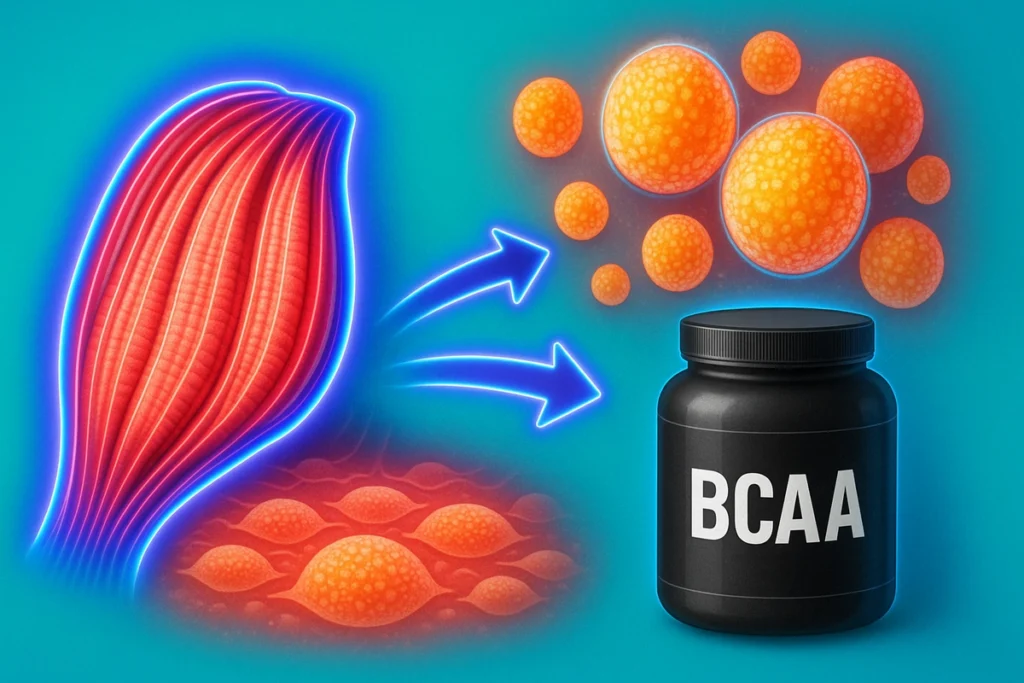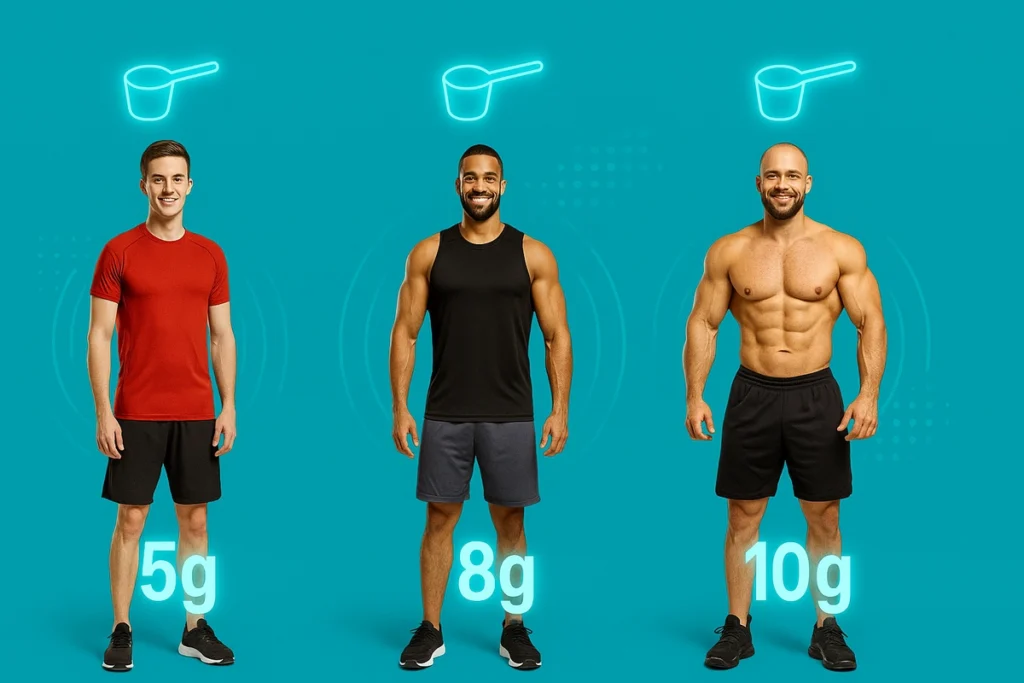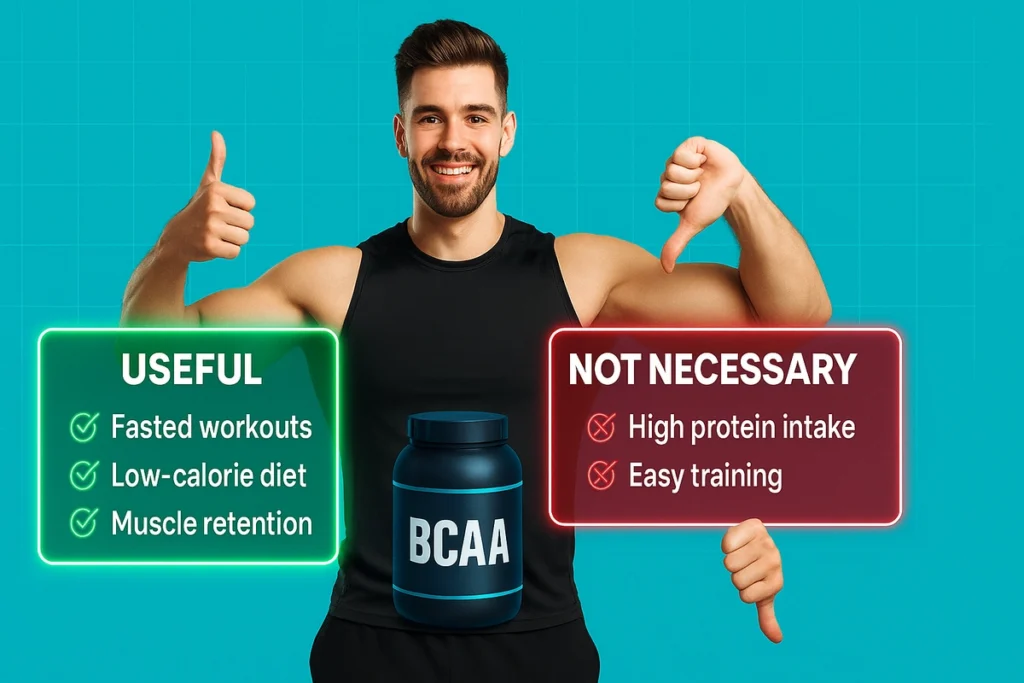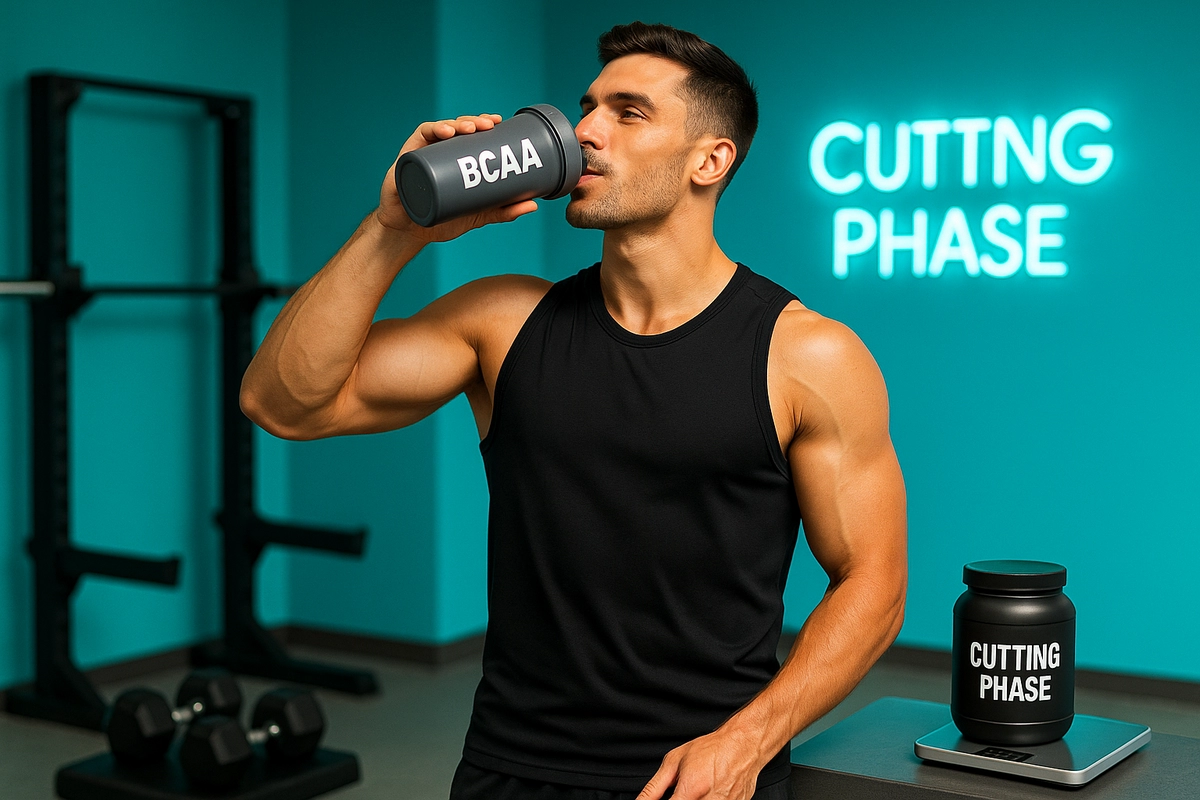Cutting is tough — you’re in a calorie deficit, trying to stay lean without losing your hard-earned muscle.
If you’ve ever wondered whether BCAAs (branched-chain amino acids) can actually help during this phase, you’re not alone.
As a fitness coach who’s done multiple cutting phases myself and helped clients through theirs, I’ve experimented with BCAA timing, dosage, and even stacked them with other supplements.
Here’s everything you need to know about BCAA dosage for cutting, plus my personal experience and client stories that prove what actually works.
Table of contents
- Ideal BCAA Dosage in a Cutting Phase
- Why BCAAs Matter During a Cut
- Best Timing for BCAA Supplementation
- How to Adjust Dosage Based on Bodyweight and Training Intensity
- BCAA vs EAA During Cutting – Which Is Better?
- My Personal Experience Using BCAAs While Cutting
- FAQs on BCAA Use in a Cut
- Do You Need BCAA to Succeed in Cutting?
Ideal BCAA Dosage in a Cutting Phase
Let’s cut right to it. During a cut, I recommend 10 grams of BCAA per training day, split into 5g pre-workout and 5g intra-workout.
The ideal ratio? Stick with the 2:1:1 formula — that’s 2 parts leucine, 1 part isoleucine, and 1 part valine.
This is the most researched formula and helps stimulate muscle protein synthesis without wasting your money on trend-heavy ratios like 8:1:1.
You don’t need to overdo it. Taking more than 10–15g daily won’t bring extra benefits if your protein intake is already on point.
For tips on how to mix BCAAs for best absorption, check this guide.
Why BCAAs Matter During a Cut

When you’re cutting calories, your body doesn’t just burn fat — it can break down muscle tissue for energy, especially if you’re training hard.
That’s where BCAAs shine:
- Leucine triggers muscle protein synthesis.
- Isoleucine and valine support endurance and reduce fatigue.
- Together, they help preserve lean mass and boost recovery even in a calorie deficit.
In one cut before summer, I kept up my strength on lifts like RDLs and incline dumbbell press — which usually drop off during a cut.
I credit that to consistent BCAA use, along with smart training and proper recovery.
And if you’re a runner or do endurance-style cutting workouts, check out this article on BCAAs for runners and endurance athletes.
Best Timing for BCAA Supplementation
To get the most benefit, use BCAA when your body is most at risk for muscle loss:
- Fasted morning workouts
- High-intensity interval training
- Long cardio sessions
Personally, I often trained fasted while traveling or during Ramadan. Taking 5g of BCAA pre-workout gave me steady energy and less soreness.
One of my clients, Andrei, trained at 6 a.m. with zero food. Once he added BCAA pre-workout, his performance instantly improved.
Want to go deeper? Read my full breakdown on BCAA timing for fasted cardio and fat loss or compare BCAA before vs after workout.
How to Adjust Dosage Based on Bodyweight and Training Intensity

If you’re on the lighter side and not training super hard, 5–7g total per training day might be enough.
But for most lifters and athletes:
- 10g/day split pre and intra-workout hits the sweet spot.
- Doing fasted cardio? Take a small 3–5g dose before to avoid muscle loss.
During a 3-week calorie shock phase, I stuck to 10g/day. Despite the calorie drop, I stayed full, recovered well, and didn’t lose strength.
For rest days, you might still benefit. Check this breakdown on BCAA timing on rest days.
BCAA vs EAA During Cutting – Which Is Better?
I’ve tested both. Here’s my honest take:
- EAAs are great if your protein intake is low or if you’re plant-based.
- But BCAA feels lighter, absorbs faster, and works better during intense training.
Once, I switched to EAA during a cut. It helped recovery but made me feel bloated mid-workout.
BCAA was easier to digest and didn’t sit heavy. I now stick with it for intra-workout use.
If you’re not sure which is right for you, check out this full comparison: EAAs vs BCAAs vs Protein.
And for those considering protein powders as an alternative, here’s the truth on BCAA vs protein powder — do you really need both?
My Personal Experience Using BCAAs While Cutting

Every serious cut I’ve done included BCAA.
One cut had me at 1700 kcal/day, training hard. I stayed full, strong, and sore-free — thanks to consistent 10g/day BCAA use.
My client Lucas cut BCAA out completely and by week two, he looked flat and reported poor recovery. We added BCAA back in, and by week three, his energy and muscle fullness bounced back.
If you’re vegan or vegetarian, this becomes even more important. Check this guide on the best BCAA supplements for vegans.
FAQs on BCAA Use in a Cut
Not directly. But they help preserve muscle, which keeps your metabolism high — and that supports fat loss.
Yes — as long as you stay within safe dosages. I usually recommend 5–10g per day for cutting.
Worried about overdoing it? Read my breakdown of BCAA overdose and side effects.
Absolutely. I stack them with caffeine, creatine, and L-carnitine during most cuts.
Curious whether you need to take BCAA with food? Read this guide: BCAA with or without food.
Do You Need BCAA to Succeed in Cutting?

If you’re eating enough protein (2g/kg+), you might not need BCAA.
But if you:
- Train fasted
- Do intense cardio
- Follow a strict low-calorie or vegan diet
- Struggle with recovery during cuts
…then BCAA can be a game-changer.
I still use them in most cuts — and recommend them to clients in these exact situations.
They’re not magic, but they’re a smart, simple tool to hold onto lean mass and stay sharp in your workouts — even when you’re deep in a deficit.



Leave a Reply